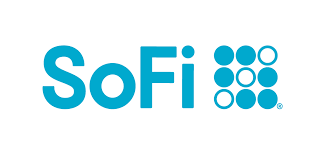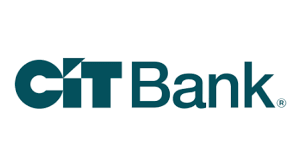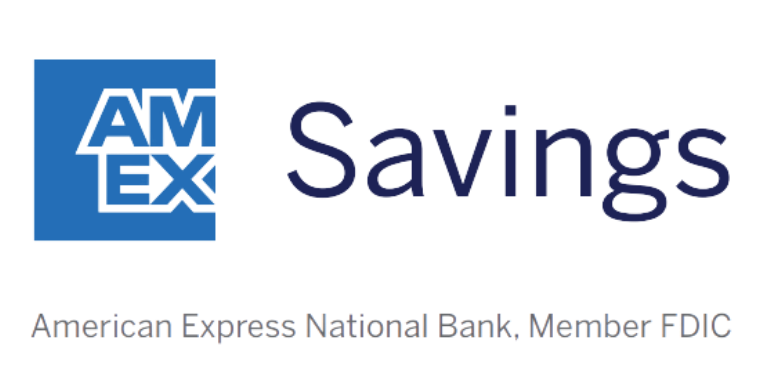When you open a savings account, your bank will most likely give you an interest rate that will be paid on money you have deposited. But how exactly does this work? Is this rate the interest you'll get every month or every year? How often will interest show up in your account?
In this article, we'll go through the important details of how savings account interest works and what you should know about it.
Is your savings account interest rate monthly or yearly?
The short answer is that your savings account interest rate is expressed on an annual basis. However, the complete answer to the question of whether your savings interest rate is paid monthly or yearly is a little more complicated than it sounds.
There are three different interest rate concepts you should know in regard to your savings account:
Annual percentage yield (APY)
Annual percentage yield is the technical term for the "interest rate" your bank probably tells you or advertises for your savings account. And although the terms APY and interest rate are often used interchangeably, they actually mean slightly different things, which we'll get to in the next definition.
In simple terms, your APY is the yield you would get on your money after one year. As an example, let's say you deposit $1,000 into a savings account with a 4% APY. After one year, you can expect to have $1,040. Of course, this assumes you don't deposit or withdraw any money, and that your APY stays constant for the entire year, both of which aren't likely in real-world situations.
Because savings accounts typically express their interest as APY (with the "A" standing for "annual"), the short answer to our question is that your savings account interest rate is yearly.
It's also worth mentioning that savings account APYs vary significantly between financial institutions. Some of the best-known branch-based banks pay some of the lowest APYs on savings accounts, even in the rising-rate environment we're in. On the other hand, some of the top online banks pay much more. This is why it pays to shop around before you open a savings account, as you might be surprised by the difference in rates paid by different banks.
Compounding frequency
Here's where APY and interest rate differ. APY takes into account how often your interest is calculated by the bank. Interest rate does not.
As a simplified example, let's say your personal savings account has a 3% interest rate and your interest is compounded monthly. This means that instead of your bank calculating your interest once per year at 3%, it will calculate it once per month at one-twelfth of that rate, or 0.25% in this case.
The reason APY is different is a little mathematically complex, but here's the idea. If you have $1,000 in an account at 3% compounded monthly, after one month you'd have $1,002.50. When your second month's interest is calculated, it is based on that new higher amount, not the original $1,000.
Each month, the balance used to compute your interest gets higher. Your interest is then calculated on your original principal plus the interest that has accumulated so far. APY takes this effect into account. I'll spare you the math, but in this example, a 3% interest rate compounded monthly translates to a 3.04% APY. As mentioned, they are slightly different concepts.
The compounding frequency of savings account interest depends on your bank. Monthly or quarterly compounding are the most common, but other frequencies, such as daily compounding, aren't unheard of.
Payment frequency
Finally, payment frequency is how often the interest you've earned actually shows up in your savings account. And this isn't necessarily the same as compounding frequency. For example, it's entirely possible for a savings account to compound interest on a daily basis and pay interest monthly. Most savings accounts pay interest on a monthly basis, regardless of compounding frequency, although there are exceptions.
How savings account interest is calculated
We'll look at an example of how savings account interest is calculated, but here's the mathematical formula:

In this formula, "r" stands for the interest rate, "n" stands for the number of compounding periods each year, and "t" is the amount of time in years. For monthly compounding, "n" is 12, and one month is equal to 0.833 years.
For example, let's say that you open a savings account that pays 2.5% interest compounded and paid monthly. You deposit $5,000, and your balance remains the same for the entire first month. Here's how your first monthly interest payment would be calculated. Note that in the formula, percentages need to be converted into decimals.

The difference between the final and initial balance is the amount of interest your account earned over the time period, which is $10.42 in this case.
Will my savings account interest rate increase over time?
It's important to realize that unless your savings account is actually a certificate of deposit, or CD, your interest rate or APY won't be constant over time. Financial institutions can choose to increase or reduce your savings account interest rate periodically, which is a big part of how savings accounts work. There's no way to know how often your interest rate could change, or by how much. Savings account interest rates aren't usually dependent on any benchmark interest rate and are set by the financial institution.
Having said that, savings interest rates tend to move in the same direction as benchmark interest rates, particularly the federal funds rate. When the Federal Reserve raises its rate, financial institutions often increase the rates they're willing to pay on savings deposits. In 2023, we've seen the rates paid by the top high-yield savings accounts generally trend higher because of the Federal Reserve's rate hikes.
Compare savings rates
Make sure you're getting the best account for you by comparing savings rates and promotions. Here are some of our favorite high-yield savings accounts to consider.
| Account | APY | Promotion | Next Steps |
|---|---|---|---|

Open Account for SoFi Checking and Savings
On SoFi's Secure Website.
Rating image, 4.50 out of 5 stars.
4.50/5
Our ratings are based on a 5 star scale.
5 stars equals Best.
4 stars equals Excellent.
3 stars equals Good.
2 stars equals Fair.
1 star equals Poor.
We want your money to work harder for you. Which is why our ratings are biased toward offers that deliver versatility while cutting out-of-pocket costs.
|
up to 3.80%²
Rate info
You can earn the maximum APY by having Direct Deposit (no minimum amount required) or by making $5,000 or more in Qualifying Deposits every 30 days. See SoFi Checking and Savings rate sheet at: https://www.sofi.com/legal/banking-rate-sheet.
Min. to earn: $0
|
New customers can earn up to a $300 bonus with qualifying direct deposits!¹
|
Open Account for SoFi Checking and Savings
On SoFi's Secure Website. |

Open Account for CIT Platinum Savings
On CIT's Secure Website.
Rating image, 4.50 out of 5 stars.
4.50/5
Our ratings are based on a 5 star scale.
5 stars equals Best.
4 stars equals Excellent.
3 stars equals Good.
2 stars equals Fair.
1 star equals Poor.
We want your money to work harder for you. Which is why our ratings are biased toward offers that deliver versatility while cutting out-of-pocket costs.
|
4.10% APY for balances of $5,000 or more
Rate info
4.10% APY for balances of $5,000 or more; otherwise, 0.25% APY
Min. to earn: $100 to open account, $5,000+ for max APY
|
Earn a bonus of at least $225 after a one-time deposit of $25,000+.
Transfer a one-time deposit of $25,000-$49,999.99 for a bonus of $225. Transfer a one-time deposit of $50,000+ for a bonus of $300. Account must be opened with code PS2025 while this promotion lasts, and funded within 30 days. Bonus will be fulfilled within 60 days from the funding date. There is no period of time where the customer will be required to maintain the funds. Account must be open when bonus is credited. One bonus per account and primary customer. Bonus will be credited into the Platinum Savings Account that fulfills the funding requirement. Funding can be deposited all at once or incrementally.
|
Open Account for CIT Platinum Savings
On CIT's Secure Website. |

Open Account for American Express® High Yield Savings
On American Express's Secure Website.
Rating image, 4.00 out of 5 stars.
4.00/5
Our ratings are based on a 5 star scale.
5 stars equals Best.
4 stars equals Excellent.
3 stars equals Good.
2 stars equals Fair.
1 star equals Poor.
We want your money to work harder for you. Which is why our ratings are biased toward offers that deliver versatility while cutting out-of-pocket costs.
|
3.70%
Rate info
3.70% annual percentage yield as of April 16, 2025. Terms apply.
Min. to earn: $0
|
N/A
|
Open Account for American Express® High Yield Savings
On American Express's Secure Website. |
SoFi disclosure:
¹ New and existing Checking and Savings members who have not previously enrolled in Direct Deposit with SoFi are eligible to earn a cash bonus of either $50 (with at least $1,000 total Direct Deposits received during the Direct Deposit Bonus Period) OR $300 (with at least $5,000 total Direct Deposits received during the Direct Deposit Bonus Period). Cash bonus will be based on the total amount of Direct Deposit. Direct Deposit Promotion begins on 12/7/2023 and will be available through 1/31/26. See full bonus and annual percentage yield (APY) terms at sofi.com/banking#1.
² SoFi members who enroll in SoFi Plus with Direct Deposit or by paying the SoFi Plus Subscription Fee every 30 days or with $5,000 or more in Qualifying Deposits during the 30-Day Evaluation Period can earn 3.80% annual percentage yield (APY) on savings balances (including Vaults) and 0.50% APY on checking balances. There is no minimum Direct Deposit amount required to qualify for the stated interest rate. Members without either SoFi Plus or Qualifying Deposits, during the 30-Day Evaluation Period will earn 1.00% APY on savings balances (including Vaults) and 0.50% APY on checking balances. Only SoFi Plus members are eligible for other SoFi Plus benefits. Interest rates are variable and subject to change at any time. These rates are current as of 1/24/25. There is no minimum balance requirement. Additional information can be found at http://www.sofi.com/legal/banking-rate-sheet. See the SoFi Plus Terms and Conditions at https://www.sofi.com/terms-of-use/#plus.
³ We do not charge any account, service or maintenance fees for SoFi Checking and Savings. We do charge a transaction fee to process each outgoing wire transfer. SoFi does not charge a fee for incoming wire transfers, however the sending bank may charge a fee. Our fee policy is subject to change at any time. See the SoFi Checking & Savings Fee Sheet for details at sofi.com/legal/banking-fees/.
⁴ SoFi Bank is a member FDIC and does not provide more than $250,000 of FDIC insurance per depositor per legal category of account ownership, as described in the FDIC’s regulations.
Any additional FDIC insurance is provided by the SoFi Insured Deposit Program. Deposits may be insured up to $3M through participation in the program. See full terms at SoFi.com/banking/fdic/sidpterms. See list of participating banks at SoFi.com/banking/fdic/participatingbanks.
⁵ We’ve partnered with Allpoint to provide you with ATM access at any of the 55,000+ ATMs within the Allpoint network. You will not be charged a fee when using an in-network ATM, however, third-party fees incurred when using out-of-network ATMs are not subject to reimbursement. SoFi’s ATM policies are subject to change at our discretion at any time.
⁶ Early access to direct deposit funds is based on the timing in which we receive notice of impending payment from the Federal Reserve, which is typically up to two days before the scheduled payment date, but may vary.
⁷ Overdraft Coverage is limited to $50 on debit card purchases only and is an account benefit available to customers with direct deposits of $1,000 or more during the current 30-day Evaluation Period as determined by SoFi Bank, N.A. The 30-Day Evaluation Period refers to the “Start Date” and “End Date” set forth on the APY Details page of your account, which comprises a period of 30 calendar days (the“30-Day Evaluation Period”). You can access the APY Details page at any time by logging into your SoFi account on the SoFi mobile app or SoFi website and selecting either (i) Banking > Savings > Current APY or (ii) Banking > Checking > Current APY. Members with a prior history of non-repayment of negative balances are ineligible for Overdraft Coverage.
FAQs
-
In most cases, savings account interest is paid monthly. There can be exceptions -- for example, some banks make quarterly payments.
-
The interest paid on savings accounts is compound interest, although the frequency at which it compounds can vary. The short definition of compound interest is interest that is paid on the principal balance and the interest that has accumulated in the account. This is the primary reason that a savings account's interest rate and APY (annual percentage yield) are typically two different numbers. APY takes the effects of compounding into account, while interest rate doesn't.
-
The amount you'll make on a $1,000 savings account deposit depends on your account's APY and how long you leave your money in the account. As an example, let's say you deposit $1,000, your bank pays a 3% APY, and you leave your money in the account for three years. After the first year, you'd have $1,030. After the second, that amount would grow by 3% to $1,060.90. And after the third year, your balance would grow by another 3% to $1,092.73.
We're firm believers in the Golden Rule, which is why editorial opinions are ours alone and have not been previously reviewed, approved, or endorsed by included advertisers. Motley Fool Money does not cover all offers on the market. Motley Fool Money is 100% owned and operated by The Motley Fool. Our knowledgeable team of personal finance editors and analysts are employed by The Motley Fool and held to the same set of publishing standards and editorial integrity while maintaining professional separation from the analysts and editors on other Motley Fool brands. Terms may apply to offers listed on this page. APYs are subject to change at any time without notice.